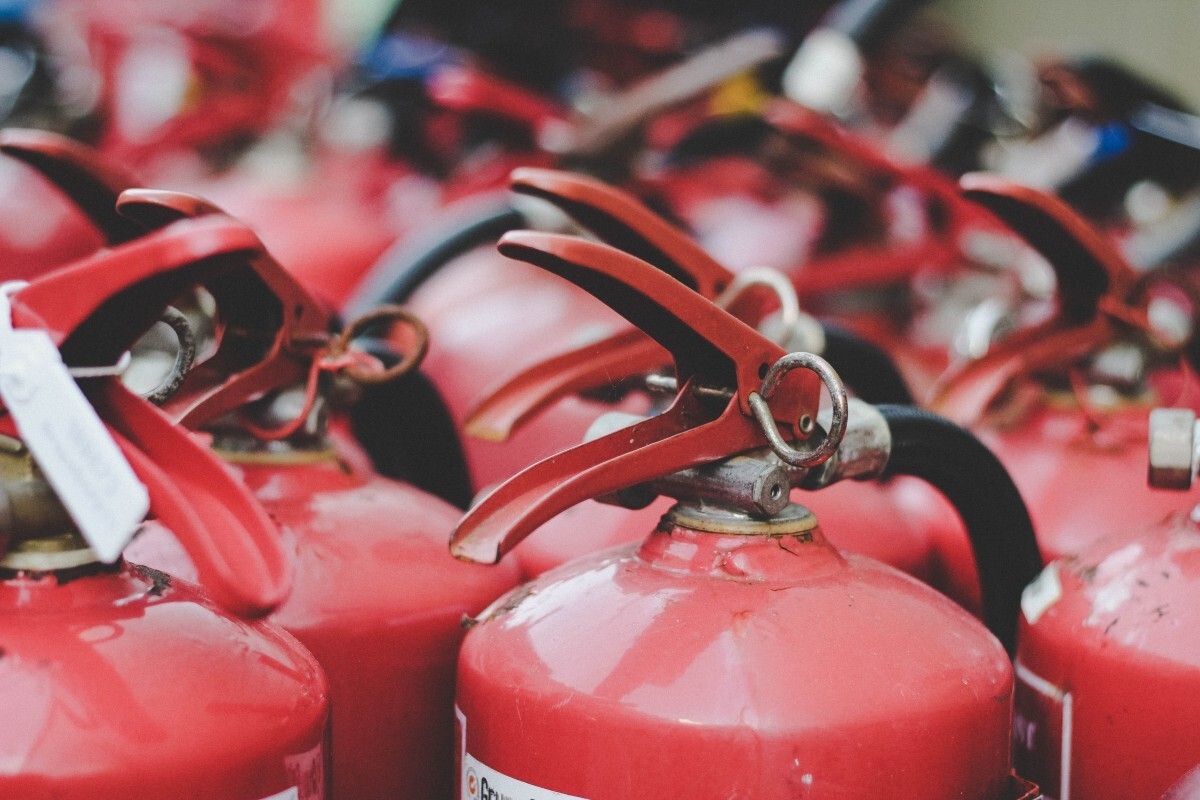Safety is the top priority of any retail space, and being prepared and able to prevent fires is one of the most vital components of guaranteeing the safety of everyone inside. Auto body shops, in particular, face a wide range of specific fire risks due to the equipment, chemicals, and spray booths that are used on a daily basis. A fire suppression system is essential to prevent disaster from striking in your auto body shop.
The Different Parts of Your Auto Body Shop Fire Safety Plan
Every auto body shop must address a wide range of areas to properly plan out their fire safety measures, and the process will include some basic fire safety requirements that any workplace must follow.
The appropriate fire alarms, fire extinguishers, emergency lighting, and exit signage must all be in place, as these will allow occupants to respond quickly should a fire break out and reach safety regardless of the conditions.
You should also consider requirements that are specific to your property. While the main focus is on the shop floor, you can’t overlook kitchen fire systems. A staff lunchroom, for instance, may require kitchen hood systems or other installations to meet fire codes.
Staff training is also essential. All staff must be aware of the fire extinguishers and first aid kits available and their locations, and evacuation plans must be made widely known. Any staff that uses specialty equipment must also have the requisite training for any specific fire risks associated with its use.
Fire Suppression for Auto Body Shops
Auto body shops often require specialized fire suppression systems rather than the standard sprinkler systems found throughout offices and other traditional workplaces.
The presence of such a wide range of chemicals must be taken into account when choosing the right fire suppression system, and it’s particularly important when it comes to your painting spray booths. The aerosolized paint can allow any fire to spread rapidly, so suppression systems must be specifically designed with this in mind.
The appropriate design of a suppression system is based on determining the correct suppression agent, be it a wet or dry chemical or water, and the number of heads for the suppression system. It’s in your best interests to let professionals handle this important design process.
You should also keep in mind that the construction of your spray booths will also play an important role in fire safety. Due to the increased fire risk, spray booths can’t be constructed in the same manner as simple residential walls. Instead, concrete or steel firewalls with an increased fire rating are needed.
Fire Safety Isn’t Optional
These increased requirements may seem like a burden for auto body shop owners, but they are absolutely critical. For one, they can protect staff from serious injury or death if a fire breaks out on a shop floor — putting safety first isn’t optional.
Those same protections help safeguard your investment in your business in terms of equipment and property. A fire can quickly destroy everything you’ve built over the years, and if you don’t have the right fire safety measures in place, you may find yourself in a situation where your insurance won’t be willing to pay for any damages.
Chances are you’re under a legal obligation to have a fire suppression system as well. Fire safety codes vary between different states and municipalities, but most base their rules on standards developed by the National Fire Protection Agency (NFPA).
Auto body shops can fall under the requirements for both NFPA 30A and NFPA 33. NFPA 30A is a generic code for major repair garages and requires the installation of automatic sprinklers, depending on the size of your building, while NFPA 33 deals specifically with spray paint. It establishes the need for enclosed spray booths and spray rooms and the ventilation and fire safety standards related to their construction.
Find the Right Solution for Your Auto Body Shop
You can leave your spray booth and shop floor fire safety to the experts at Preventive Fire. Our team installs and services a wide range of fire suppression and safety systems, including those for spray booths, marine fire protection, kitchen hood systems, and more.

